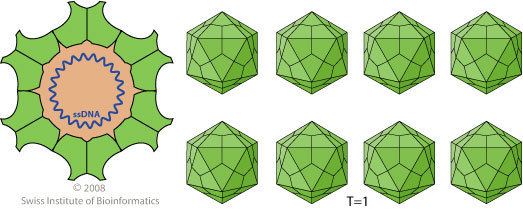Group Group II (ssDNA) | Rank Genus | |
 | ||
Similar Banana bunchy to, Luteovirus, Curtovirus, Polerovirus, Geminiviridae | ||
Plague inc infect the world with the google nanovirus
Nanovirus is a genus of viruses, in the family Nanoviridae. Legume plants serve as natural hosts. There are currently six species in this genus including the type species Subterranean clover stunt virus. Diseases associated with this genus include: stunting, severe necrosis and early plant death.
Contents
Taxonomy
Group: ssDNA
Structure
Viruses in Nanovirus are non-enveloped, with icosahedral and round geometries, and T=1 symmetry. The diameter is around 18-19 nm. The genome is multipartite, and the genome components (6 or 8, depending on the genera) are circular, around 1kb in length, essentially carry only one gene, and are individually encapsidated forming small icosahedral virions (18–20 nm).
Life Cycle
Viral replication is nuclear. Entry into the host cell is achieved by penetration into the host cell. Replication follows the ssDNA rolling circle model. DNA-templated transcription is the method of transcription. The virus exits the host cell by nuclear pore export, and tubule-guided viral movement. Legume plants serve as the natural host. The virus is transmitted via a vector (the virus does not replicate in this). Transmission routes are vector.
